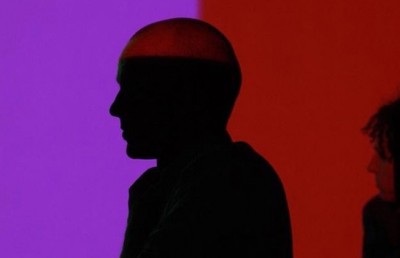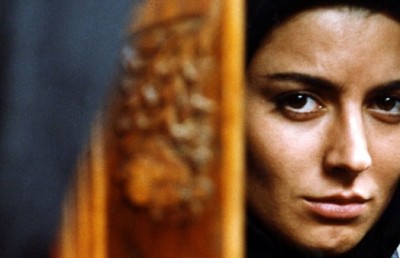The Act of ‘Seeing’ With One’s Own Eyes
A Look at Ivan Zulueta's 'Lost' Cult Movie
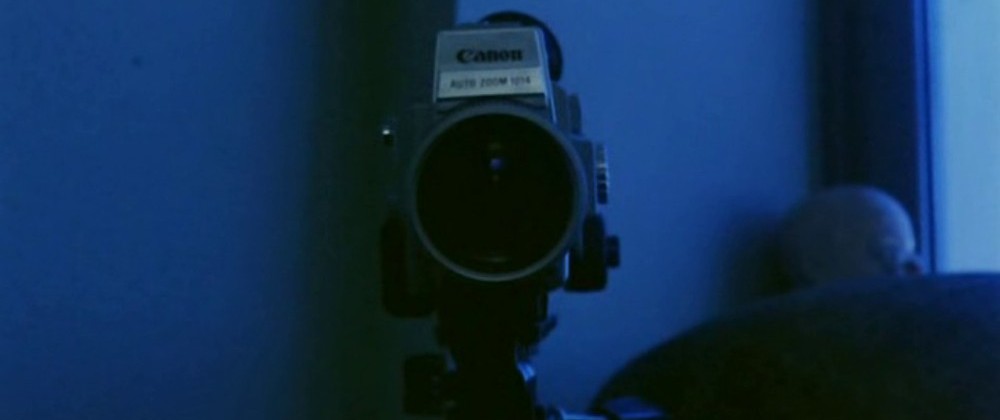
In the film ARREBATO Eusebio Poncela plays a horror movie director (José Sirgado) in the process of adding the final touches to his debut’s belated follow-up. We first see Sirgado in the cutting room, visibly displeased with his new creation. We are given a glimpse of his film –something like a parody of a bad Jean Rollin film. When Sirgado gets home, his recent past seems to materialize. First he comes across Ana (Cecila Roth), his former girlfriend, lying unconscious in the bed, lost in a heroin induced paradise; he then finds a parcel in the mail, which contains a tape and a reel of super-8 film from his old acquaintance Pedro P. (Will More). From now on, the film interweaves Sirgado listening to the tape and watching the reel with flashbacks showing the beginning of his relationship with Pedro, a young man affected by a gigantic Peter Pan syndrome (hence the character’s name…), whose only purpose in life is to film with his super-8 camera. Pedro claims he has developed a special sensitivity towards filmed images which allows him to reach a near cathartic, mystical state which he calls ‘Arrebato’ (literally, rapture). Fascinated by this new form of perception, Pedro gradually becomes addicted to it, to the point of alienating himself from the real world in order to repeat the experience over and over again, ultimately filming nothing other than himself. As the story unfolds Pedro’s tape recorded voice gradually reveals the astonishing truth: experiencing the ‘Arrebato’ leads to a tremendous fate, as the camera acquires a life and an intelligence of its own, absorbing the victim’s vital force until the latter disappears from the real world.
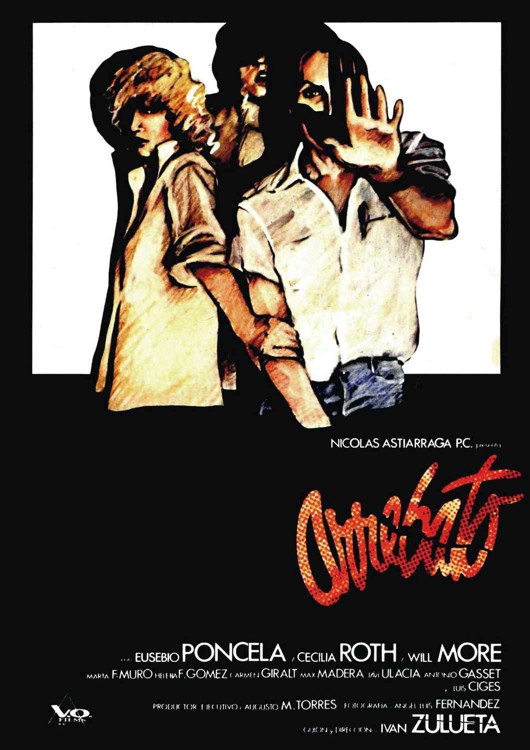
Born in San Sebastian, September 29, 1943, Ivan Zulueta established himself as one of Spain’s most promising young filmmakers after a handful of spellbinding experimental short films in the mid 1960’s (his first work, AGATA (1966), was loosely based on Edgar Allan Poe’s THE OVAL PORTRAIT). ARREBATO came a decade after Zulueta’s debut, UN, DOS, TRES, AL ESCONDITE INGLÉS (1969), a mad parody of the musical flicks starring fashionable, ephemeral pop singers which were all the rage in the late Sixties. Under the surface of a disengaged, unpretentious genre flick which stylistically evoked Richard Lester’s A HARD DAY’S NIGHT and HELP!, Zulueta cleverly satirized the bland food-for-thought served to the masses by Francisco Franco’s dictatorial regime. As critically acclaimed as it was, UN, DOS, TRES… seemed like a puzzling, peculiar choice for such an underground, marginal filmmaker.
From 1970 to 1978, Zulueta often travelled to Morocco, a place that fascinated him and inspired several of his works. “I encountered a civilization so very different from all the others… it seemed really hallucinating to me. Moreover, the place and its atmosphere reminded me of my own childhood.. it was an unforgettable experience.” Zulueta always had a super 8 camera at hand, ready to film whenever something struck his imagination. The results were a handful of striking shorts: MI EGO ESTÁ EN BABIA (1975), AQUARIUM (1975), A MAL GAM A (1976), EL MENSAJE ES FACIAL (1976) and LEO ES PARDO (1976). The latter, filmed in 16 mm, contained the basic idea for ARREBATO. Zulueta and friend/producer Augusto Martinez Torres started working on a treatment, together with Antonio Gasset, who would play a small role in the finished film. However, the definitive script was penned by Zulueta, while Martinez Torres became the executive producer.
Shooting turned out to be a chaotic, nightmarish mess. Working with a minuscule crew, Zulueta had to face countless problems: production went beyond schedule and over budget and the director suffered various personal difficulties that forced him to turn down an offer to direct an episode of CUENTOS EROTICOS (1979), an omnibus project coordinated by Martinez Torres. ARREBATO’s rough cut was three hours long. Zulueta agreed that for commercial reasons the picture had to be shortened of about 30 minutes, but eventually another 40 more minutes were shorn against his wishes.
The film’s theatrical run was painfully brief. It stayed only a couple of days in one of Barcelona’s most exclusive cinemas, before disappearing into oblivion. This is where the myth surrounding the film takes over. To begin, Zulueta has not made another movie since ARREBATO. He subsequently suffered physical breakdowns and retired to his native San Sebastian, where he designed several posters for the films of his friend Pedro Almodovar (LABIRINTO DE PASIONES, ENTRE TINIEBLAS, QUÉ HECHO YO PARA MERECER ESTO?). All of this only strengthened the film’s legendary status. Despite its unavailability, ARREBATO’s fame and importance gradually grew, turning it into a film maudit, a one-of-a-kind cinematic experience as well as an emblematic title for the new wave of Spanish filmmakers of the early Eighties, “the symbol of a Spanish cinema that was apparently beyond one’s reach yet achievable, and radically different.” (Carlos Aguilar, “Antologìa Critica del Cine Español”, Catedra/Filmoteca Española, 1997, Madrid). Such filmmakers as Alex De La Iglesia and Almodovar repeatedly professed their admiration for the film and pointed out the enormous influence it had had on their work. Yet even though the ‘movida madrileña’ tried to absorb the picture and its director into one specific cultural movement, ARREBATO still exists only in and of itself; as renowned Spanish critic Carlos Aguilar puts it: “the essence that ARREBATO expresses is as inaccessible as the lesson it teaches is unabsorbable [sic].” Others labelled it as a “film-isle”. Watching it, we can not help but feel uncomfortable, somehow out of place, as if we have intruded into someone’s own private hell. This makes it an even more extreme viewing experience, as we are invited to share the director’s naked self, his personal demons, and his difficulties in surviving.
Nevertheless, ARREBATO emerges as an astounding meditation on the power of cinema, and on the complex relationship between images and reality; compared to PEEPING TOM, with whom it shares a ‘magnificent obsession’, Zulueta’s work may not have Michael Powell’s defiant irony, but it has a deep metaphysical quality that makes it a timeless, landmark work. Zulueta is not afraid of aiming high, as proven by the use of the Fantastic in order to give cinema a mythical aura. What is more, he is extremely clear in pointing out the film’s key concept: that the image of an object put on film does not share the same ontological reality as that of the filmed object. Therefore, filming becomes a way of giving transcendence to finite objects, elevating them into another dimension. However, this does not make a filmmaker a demigod. The filmmaker remains a passive figure, an instrument of his own camera. Creation is an unsolvable enigma, and the creator himself is destined to become part of his creation: the two characters Pedro and José ultimately realize their own inescapable passivity.
ARREBATO mixes genre and experimental cinema with a confidence that has rarely been equalled. The use of classic horror movie trappings is both startling and invigorating. The film’s plot revolves around an archetypal situation, as the ‘hero’ has to solve an enigma which defies rational explanation. This will lead Sirgado to “recall his own past, acknowledge his present and make a definitive decision about his future” (Aguilar). And if Pedro’s ominous, otherworldly voice emanating from the tape recorder initially sounds like one of those typical mad doctor ruminations from a bad ‘50s flick, it soon evolves into something different. The voice functions as a necessary counterpart to the images filmed by Pedro’s stop-frame camera, which end up looking like a hallucinogenic trip, fracturing reality into a series of disassociated, yet beautifully enigmatic flashes (Zulueta even films an erection as if it was the blooming of a strange flower). Zulueta’s hypnotic direction and his manipulative use of time may recall the work of David Lynch, while plot development and twists predate Cronenberg’s VIDEODROME; similarly, the analysis of the creative process focuses on themes and ideas later to be explored in NAKED LUNCH – minus mugwumps and talking typewriters/bugs, that is. Following the lesson of Franju’s LES YEUX SANS VISAGE, ARREBATO deals with the Fantastic in a strikingly matter-of-fact, realistic way.
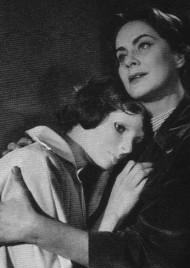
Les Yeux Sans Visage
At a certain point, Sirgado says: “It’s not that I like cinema… it’s cinema that likes me.“ Zulueta wisely explores the vampiric myth under a new, disquieting angle; what’s more, he does this in a refreshing, thought-provoking way, which is even more significant if one thinks of how such a theme has been mistreated recently (E. Elias Merhige’s self-important, insufferably pretentious SHADOW OF THE VAMPIRE is a case in point). The camera is a vampire, sucking the life out of those who fall under its spell. It is yet another variation of Cocteau’s (in)famous remark about cinema as ‘death at work,’ but Zulueta’s inventive approach breathes new life into the somewhat worn out metaphor. The mysterious red insert that appears in the footage filmed by Pedro is like a blood tribute that both Pedro P. and later Sirgado have to pay in order to fulfill their one and only desire: to become a part of their own obsession and to become as immortal as a film image (“sine vita vivens, sine morte mortuus”).
Sirgado’s drug addiction (with close-ups of the needle entering the arm) clearly mirrors his addiction to cinema: we see him injecting heroin into his body, and later hungrily staring at the super-8 film reel Pedro has sent him. This leads to a surprising analogy with a film it foreshadows, Abel Ferrara’s THE ADDICTION. But if in Ferrara’s film vampirism and drug addiction are symptomatic of man’s dependence upon evil, perhaps a consequence of scriptwriter Nicholas St. John’s stern Catholic background, here they are deprived of this theological quality; rather, they splendidly express Zulueta’s existentialist dilemma. Both heroin and cinema have a dual, dichotomous quality: while they give Pedro the serenity he has been longing for, they alienate him from the everyday world, depriving him of his vital energy and making him crave for more.
ARREBATO functions in a similar manner, as an intoxicating experience which demands much from the viewer, both physically and mentally. Yet once you become immersed into the film (or rather, once it becomes immersed in you), you just need more and more. Despite its thematic and formal affinities with underground moviemaking, ARREBATO does not become a hermetic, sleep-inducing ordeal. As Zulueta stated: “It was not my intention to make an avant-garde, elitist film, because my deepest wish is to communicate with my audience the most intensely I can. I know this picture may be disquieting and bewildering at first, but that was absolutely unintentional on my behalf.” ARREBATO is about living for cinema, and giving all of oneself to it. That is because Zulueta is just like his characters: he breathes cinema –any kind, from Mae West to Paul Naschy’s werewolf movies. He (like Pedro P. and Sirgado) follows to the letter Orson Welles’ statement: “Living for filming, rather than filming for living” and dares to bring such a purpose to its extreme consequences. In the end, Sirgado literally disappears from the phenomenal world, only to become an image impressed on film. In the end he sacrifices his own life for cinema, because only cinema is life.
(special thanks to Carlos Aguilar)




